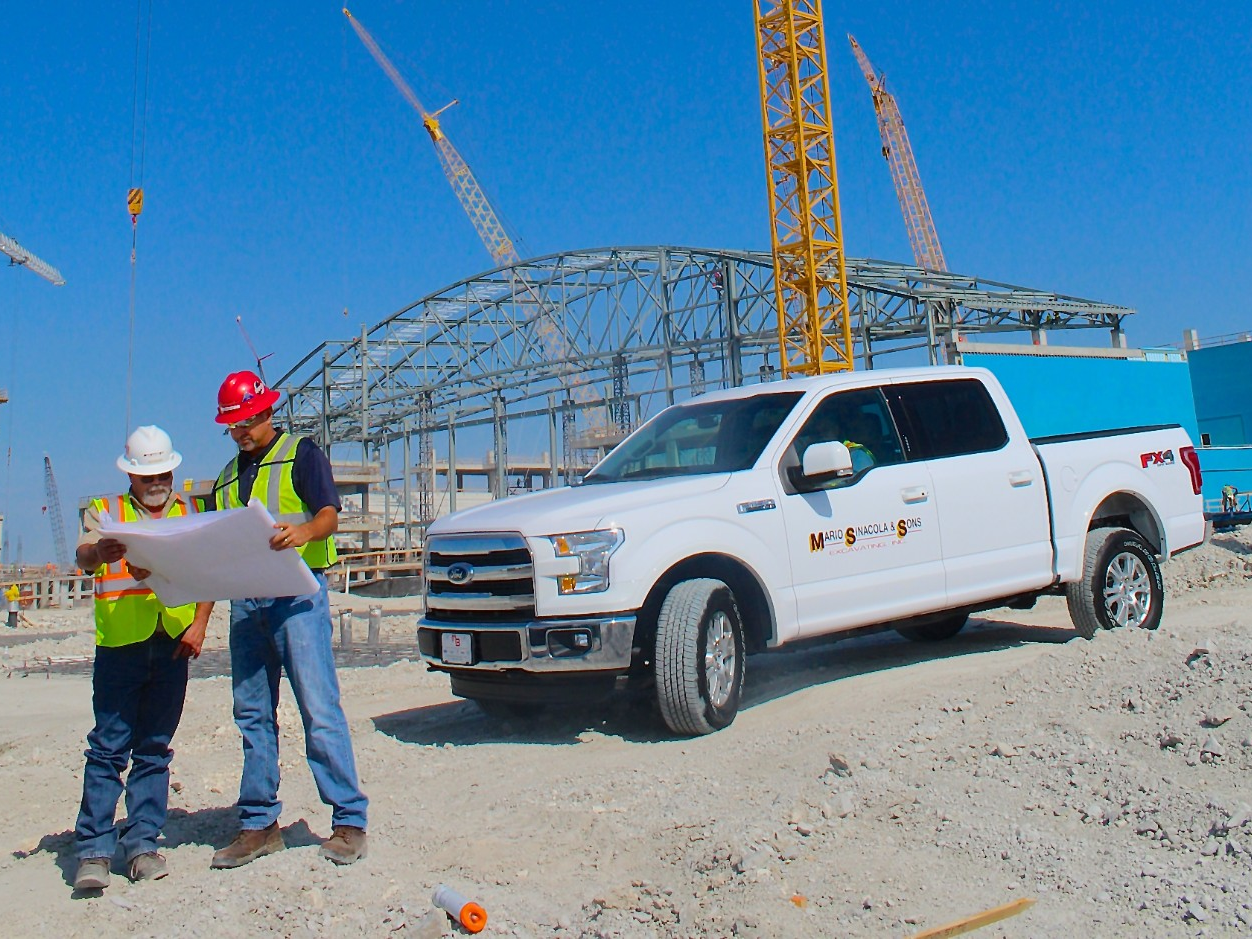
DEARBORN, Mich., Sept., 7, 2015 – In recognition of the Labor Day holiday honoring the achievements of American workers, Ford Motor Company is highlighting how Ford Trucks have helped our customers build a better world for nearly a century.
There’s a reason why Ford trucks own work. Ford’s involvement in some of the most challenging work projects in U.S. history demonstrates why Ford F-Series trucks have earned the trust of America’s hardest workers as the toughest, smartest and most capable trucks on the road.
More than any other heavy-duty pickup in the market, Ford F-Series is trusted by tradesmen to get the job done. Some statistics include:
- 81.7% of workers in the waste management industry use Ford Super Duty;
- 78% of government workers use Ford Super Duty;
- 53.7% of highway and street construction workers use Ford Super Duty;
- 72.7% of electric services workers use Ford F-150;
- 61.2% of water, sewer and pipeline construction workers use Ford F-150; and
- 56.3% of crude petroleum and natural gas workers use Ford F-150 to get the job done.

But it takes more than statistics to tell this story. Ford’s reputation is based in its Built Ford Tough promise to customers.
Mario Sinacola and Sons, a successful excavation contractor, is using a fleet of F-Series to build the new Dallas Cowboys Headquarters in Frisco, Texas (commonly referred to as “The Star in Frisco”). The fleet ranges from the all-new Ford F-150 – Ford’s toughest, smartest, most capable F-150 ever – to the Ford F-750.
“We’ve had good luck in regards to the reliability of Ford trucks and we have a lot of history with Ford. We also like that we can be consistent from F-150 up to F-750 throughout our fleet,” said Lynn Vanlandingham, VP of Equipment Operations, Mario Sinacola and Sons.
When complete in the fall of 2016, the new Dallas Cowboys development will feature a practice stadium and multi-use special event center, two outdoor practice fields and a full headquarters facility for the Cowboys. The Star in Frisco is part of a multi-billion dollar development.
“The Cowboys organization has a longstanding partnership with Ford Motor Company,” said Stephen Jones, Chief Operating Officer, Dallas Cowboys. “It’s great to know that the workhorse of Ford, the F-150, is helping in the building of the future home of the Dallas Cowboys.”
The Ford F-Series line of trucks has also owned work on a diverse mix of some of the most important infrastructure projects in U.S. History:
Building the Hoover Dam: In 1931, when work began on the greatest hydraulic construction project ever – the Hoover Dam – workers on the project relied heavily on Ford trucks for their toughness and strength. According to Ford archives, estimates of materials to be hauled for the project include 5.5 million barrels of cement, 5 million cubic yards concrete masonry, 15 million pounds of hydraulic equipment, 40 million pounds of electrical equipment, nearly 20 million pounds of gates and valves and 30 million pounds of reinforcing steel.
At the Edge of the Arctic: The Alaska Road Commission used Ford trucks to help build and maintain more than 2,000 miles of road and 70,000 miles of trails. Ford trucks often took on soft, thawing ground, hauled rock, gravel timber or dirt, pushed graders and worked on scores of other necessary jobs. In 1939, a loaded, two-ton Ford V-8 truck could easily make the 370-mile run from Valdez to Fairbanks – via gravel roads – with an average speed of over 20-mph.
Fort Peck Dam Construction: In 1933, Near Glasgow, Montana, construction began on Fort Peck Dam across the Missouri River. At the time, this was the world’s largest earthen dam (containing some 123 million cubic yards of earth). During construction, Ford V-8 trucks hauled 14 million yards of earth to clear a path.
Powering Los Angeles: Ford trucks were put to work in the late 1930s on the construction of the Hoover Dam Transmission Line that would power the city of Los Angeles for the next 100 years. Concrete mixing equipment mounted on Ford trucks made possible speedy pouring of concrete foundations for the towers. Trucks were driven from tower to tower, and winch gear units mounted on Ford V-8s hoisted the towers. Even a portable service station rode a V-8 and supplied fuel to other field equipment strung across the desert.
History repeats itself, and the hardest workers choose Ford trucks. This is why Ford owns work.

No comments:
Post a Comment